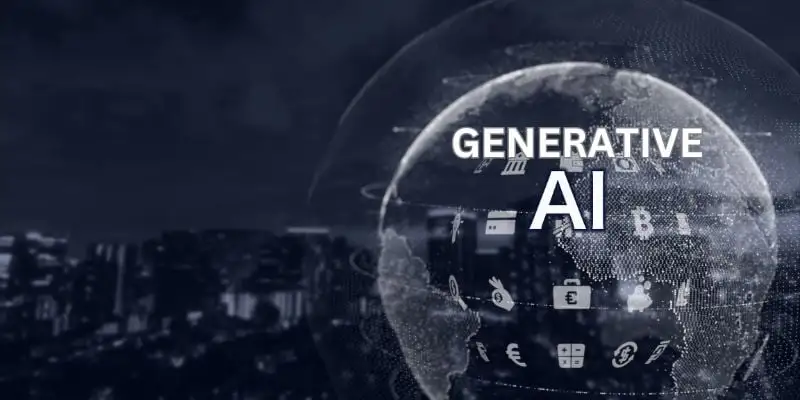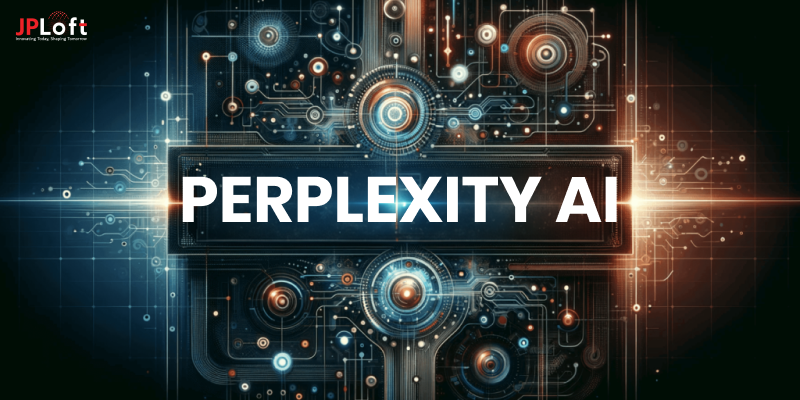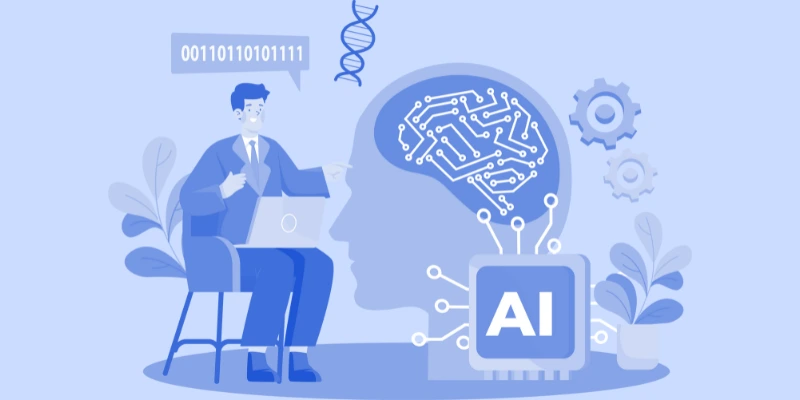Today, with retrospective experience, businesses are conscious of taking their time to ensure that Gen AI is successful instead of letting it down. Does generative AI have enough importance, or is all this hype and investment still not yielding any profits for companies? Gen AI moves us away from the one-use model of machine learning (ML) and AI instruments that claim to have applications in various areas. However, you'll need to ensure that they are appropriate to the issues you wish to solve and that the users are able to use Gen AI efficiently with the guidance of the Artificial Intelligence Development Company.
In every hopeful prediction, it's important to be cautious against the rush to introduce. Many studies indicate that many users regularly use gen AI applications for private and professional use. There is a belief that AI can improve the quality of jobs, which indicates faith that the current jobs will be stable and long-lasting. Furthermore, 79% of customer service executives think AI can positively impact their business's essential indicators. Yet, a majority of people are skeptical about the advantages of AI within the workplace. It is crucial to comprehend why they perceive AI as a risk to break down the obstacles and promote greater acceptance of AI.
What Exactly Is Generative Artificial Intelligence?
Generative AI is a term for deep-learning algorithms that can produce high-quality text images, text, or other types of content based on the training data they have been trained with. Artificial intelligence has experienced several cycles of hype, yet even to those who doubt it, the launch of ChatGPT appears to be a critical turning point. The chatbot of OpenAI, with its most recent large language model, can write poems, play jokes, and produce pieces that resemble how a person wrote them.
The last time that the concept of generative AI had this size and made significant advances was in computer vision. Selfies became Renaissance-style images, and prematurely aged photos appeared on social media feeds. Significant technological advancements in processing natural languages and the capacity of massive model languages to play with almost any subject have captured the world's imagination. It's not just about languages: Generative models can learn the language of code in software, as well as molecules, natural images, and many other types of data.
Applications for these technologies are increasing daily, and we're only beginning to investigate the possibilities. While the field continues to develop, we thought it would be helpful to review it to explain what we refer to as the term "generative" AI, how we got there, and how the models function.
Read Also: Conversational AI vs Generative AI: Core Difference for CX
Use Of Generative AI And NLP Models In Established Companies
Established businesses and venture capital funds are pumping into solutions that leverage the generative AI and Natural Language Processing (NLP) technology due to their capacity to automate tasks and reduce human involvement. This technology has proven effective in many areas, like health, augmented coding, B2B SaaS, manufacturing of chips, entertainment, and finance. In the wake of Adobe, Amazon, Google, Microsoft, and Salesforce, as well as countless other technology companies investing billions of dollars into generative AI technology for AI Software Development. How does the way we live our lives evolve, and what are the best places for startups to stand an opportunity to be successful?
Health Care - Extending The Life Of a Human Being
In the health industry, Generative AI is used to analyze medical images and offer insights to physicians. For example, GE Healthcare has developed a deep-learning system that can detect cancerous mammograms with excellent quality. IBM Watson Health has developed an AI-powered machine to examine medical pictures to find possible health concerns like cancer. The companies raised substantial amounts of money in the initial phases of the generative AI. Paige AI is a company that uses AI to increase the precision of diagnosing cancer. Prepare for a major disruption due to technology capable of interpreting images and irregularities and accurately labeling data. Technology impacts startups and large companies in personalized medical care, drug discovery, automation of repetitive processes, and imaging.
Read Also: How To Develop Healthcare Software in 2024? Complex Guide
Fintech- Banks Bet big on AI
Generative AI has also been utilized in finance to automate risk identification and fraud tasks. Large banks recently banned using chat GPT to conduct business. However, they have all chosen to develop their applications using AI.
JPMorgan Chase, for instance, is developing an AI system that can identify frauds in real time by studying vast amounts of information. In the same way, Goldman Sachs has developed an AI-powered platform that can identify market trends and give traders information. American Express and Bank of America have created AI-powered systems that can comprehend and respond to customers' questions with the appropriate response.
Financial institutions and fintech companies use innovative AI to create models that can be used in know-your-customer (KYC) methods for opening accounts. Hedge funds and banks employ the technology to develop stress-test scenarios for non-liquid financial products to help inform appropriate compliance and risk strategies and cut costs. A better understanding of risk and improving customer service are only at the top of the list.
Read Also: Fintech Software Development Comprehensive Guide 2024
Automating Human Creativity
In the field of entertainment, Generative AI is being employed to produce music and artwork. For example, Sony developed an AI system to create music by analyzing music and creating new songs. In the same way, Google has developed an AI-powered machine that creates artwork by studying artwork and then creating new versions based on the same design. What is the time frame before writers and musicians are replaced? South Park's most recent episode was written mainly in the hands of Chat GPT. What is the time frame before human creativity can be automatized?
The Adoption Of AI
There is a huge list of businesses that have yet to announce their next-generation AI projects, pilots, and plans. Little is being said about details of efficiency gains or the ROI. However, that could be as much about safeguarding any competitive edge as a failure. They can provide value that goes beyond just the act of experimenting. Pilots can indeed be valuable beyond just experimentation. Designers in the industrial sector who use LLM-powered summary reports of user research and AI-generated imagery for conception and testing can see a cut of as much as 70% of product time to market.
It also reveals the need for design teams to be able to conduct a thorough evaluation and alteration of the generated AI output to develop an idea that is realistic and able to be made as a result. The recommendation is that they set up guidelines to train employees and test pilots. In the same way, there is value in pilots such as chatbots within its internal system, which are taught by customer insight, behavioral research, and trends in the market to make these insights easier to access in the industry. However, it's still trying to determine how they can provide that benefit.
Separating the gen AI applications into the task - and specific vertical applications for roles as well as more general applications- can prove helpful to people working in knowledge organizations, and they can use them more swiftly. Likely, Microsoft says that its staff receives significant benefits from the generation of AI applications it offers on the markets, such as Copilot, which is part of Microsoft 365.
Another concern is how this can be scaled across an organization. Copilot's adoption has been located in pockets, which aligns with how most Gen AI deployments occur within specific areas: sales and marketing, service and support, and even product development. The majority claim to have saved money with Gen AI and have witnessed increased call center agent efficiency and improved marketing conversion rates using customized content. Moreover, models are being implemented in weeks instead of months. In contrast, there has been minimal outside-customer service or network infrastructure mapping.
The Causes Of The Division
Despite all the hype surrounding generative AI, however, its adoption still needs to grow. 49% of companies are still not incorporating the technology into their practices. AI implementation can pose challenging difficulties for many reasons. However, most financial constraints were identified as the primary obstacle to both small and large corporations. It is because everywhere, AI is typically perceived as a technology that's difficult to scale up, maintain, and integrate into existing IT technology.
A further obstacle to AI adoption lies in the creation of interpersonal connections and the ability to communicate with clients. Making connections and building relationships is essential in various jobs, particularly for sales, as there is a fear that AI does not have the interpersonal and emotional abilities that human beings can bring to the table, which could negatively impact the level of interactions customers have with the business. A perceived deficiency in humans' empathy and interpersonal abilities and the inability to provide access to data can create uncertainty in employees and customers that may influence sales possibilities.
One major fear surrounding AI is its potential to render specific job pathways obsolete. However, this fear is false since 70% of those polled aren't worried AI will displace them. AI can take their jobs away, which suggests a degree of confidence and understanding that AI instruments are created to enhance instead of replacing human jobs.
Bridge The Gap Between Those Who Believe And Doubt
To address any issues, companies should develop an AI policy to help staff members understand how to use AI to fulfill their duties most effectively. Most customer service and sales experts say their firm has no company-wide AI policy. In addition, only about half believe that AI is available. This suggests an increasing need for specific company AI guidelines to ensure its use responsibly. Because some organizations tend to be more adept at implementing AI than others, it is essential to have general policies. However, the adoption speed depends on the adoption rate and use level. It will be based on a firm's culture, size, and industry that it works in, as well as the amount of money invested in AI.
For sales professionals, setting up a conducive atmosphere for collaboration between AI robots and human employees is essential to efficiently leveraging AI's power. Promoting teamwork and creating a learning culture allows employees to recognize the importance of AI and use the technology to enhance productivity and efficiency. A majority of salespeople (84 percent) consider that AI can positively impact their business sales, which indicates that they trust the power of AI to transform technology.
Gen AI Specific Successes
Gen AI has successes in various sectors like document engineering, in which Docugami can provide custom small language models to build a knowledge graph using complex client documents that can be used to generate documents and extract data. Commercial insurance, another vertical, Docugami, is an early adopter. This includes declarations of value and certificates of insurance, as in policy documents that include renewal dates, penalties, and other liabilities. This information explains the risk for individuals and the whole portfolio. It's been challenging to extract manually and then consolidate in creating new quotations or present the risk for insurance companies.
Like everyone else, major Docugami customers created generation AI committees and began projects in 2023. But most of them have moved from research to deployment, with production deployments starting about six months ago and seeing tangible results. For life sciences, one customer utilizes the platform to document clinical trials, compliance, and data exploration documentation.
Coding is a different area in which it is becoming more commonplace to use gen AI for production, which has become increasingly popular. This is regardless of the GitHub Copilot or Google's brand new Gemini Code Assist, AWS CodeWhisperer, or other tools such as ChatGPT that don't require a developer's permission.
Although the productivity improvements could be less initially, when introducing GitHub Copilot to an AI Development Company developers, they only took the created code 13 percent of the time. In the present, more than half of the code ideas are approved. However, there are many other indicators, like high-quality code, that businesses are likely to want to monitor, too.
However, the generation AI benefits can be higher on low code platforms, where developers with less experience benefit significantly from the help. Digital insurance agencies are already using Power Automate extensively, but writing an automation workflow with natural language is quicker than writing an interface that drags and drops. The workflows that would take an entire day to design and then configure can be completed in less than 40 minutes when using Copilot to Power Automate, which is an improvement of more than 80 percent.
Businesses that have already implemented Power Platform for low code and RPA have discovered that they can increase the power of automation by using Copilot Studio to orchestrate processes with several workflows available, including refunds on tickets to Cineplex. Agents used to take between five and 15 minutes to process the refund, even when they had automation. Now, it's just 30-to-60 minutes.
Read Also: Best AI apps
The Money And Investing In Generative AI
Generative AI has made noise in technology due to its ability to create content like pictures, text, and videos. This technology is finding applications in various sectors, such as finance, healthcare, and entertainment. Venture capitalists usually note new technology before Fortune 500 companies, which isn't different. In anticipation of massive bets made by Microsoft, Google has long been trying to realize the power of AI (although it has fallen short in its latest product, BARD).
Startups of the past and the giants of technology in the present have invested hugely in generative AI companies; however, in the last two years, generative AI has seen a significant increase. One of the primary factors driving investment in generative AI is its potential to reduce the need for human involvement. The technology appeals to specific industries, like finance and healthcare, as automated jobs can yield considerable cost savings.
What's Next?
The excitement is well-deserved. Open-source technology will affect the pace of development more quickly than the Internet. Moreover, major corporations will be most likely to profit from its utilization. Who is putting up these guardrails? What are we doing to ensure the information used is reliable, impartial, relevant, and valuable? Who can we trust to do this? Who's job will be cut?
There will be job losses, like those eliminated at the beginning of manufacturing becoming automated. Yet, job opportunities will emerge, and employees will have the technology to improve efficiency and focus on higher-order work to generate value.
Read Also: Top AI Voice Apps
Conclusion
As we look ahead, it's evident that AI is set to continue to develop and will become an integral element of how we do business. As AI advancements occur, Customized AI Development Company have to be able to adjust to changing conditions so that they can maintain a competitive advantage. With the introduction of AI guidelines to comprehend the capabilities of AI, firms can improve their effectiveness and benefit from the information-driven insight that can enable them to thrive in their market.
Businesses must nevertheless approach AI adoption with openness and an eye toward human beings. Resolving concerns and doubts about job loss is a matter of transparency and an effort to empower employees with AI. By creating a positive environment that encourages interaction between AI systems and sales specialists, companies can unleash AI's full potential and see substantial improvements in efficiency, customer satisfaction, and overall sales efficiency.














Share this blog